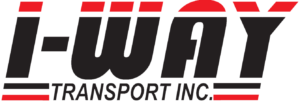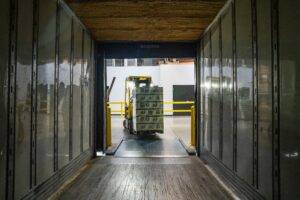Transportation management systems (TMS) revolutionize the way businesses move freight by making it more dependable, affordable, and efficient. TMS has options for transferring cargo via various modes of transportation, not just those involved in intermodal transfers. As part of the TMS’s operations, cargo can be shipped anywhere in the world, using either the company’s own transportation assets or those of an outside source. Whatever you need to transport, from a single letter to a whole container load, TMS can handle it.
Nothing has benefitted the supply chain operations as Transportation Management Software has. The TMS automates the fundamental transportation operations and offers answers for transporting cargo via any method, including intermodal transport. Improved service levels and reduced freight costs are two of the main reasons why shippers opt for TMS systems rather than more traditional TMS approaches. The benefits of a TMS are important enough to demand your attention and study. So, let’s quickly examine what transportation management systems are and why they are so useful (TMS).
What is a Transport Management System?
TMS stands for transportation management system and is a platform developed to simplify the logistics of transport. Transportation solution management is a component of supply chain management. By automating their current procedures and gaining useful insights, shippers can save time and money on future shipments with the help of a TMS.
Shipping is a complex operation, and those in the distribution, e-commerce, and freight-moving industries are well aware of the various moving components involved. Freight shippers are continuously on the lookout for methods to save money and streamline their operations, from price quotes to final deliveries. Shippers now have a tool in the form of TMSs (transportation management systems) to help them achieve this goal.
Benefits of Transport Management System
1. Enhanced Warehouse Efficiency
A TMS can improve warehouse productivity. Using a TMS means less time is spent on administrative jobs like freight management, giving you more time for activities like warehouse management. By integrating your TMS with other platforms, such as your ERP, you can save time otherwise spent on data entry and error correction. Implementing both a Warehouse Management System and a Supply Chain Visibility Solution can help you save money and improve productivity even further (SCIS).
2. Increased Focus On Customers
Customers today expect instantaneous service, the flexibility to make last-minute changes to their orders, and personalized delivery window selection and time windows. They don’t only desire it; rather, they demand it with every purchase. To meet client expectations by modifying processes is a huge issue for businesses. This is where TMSs, particularly those of the latest generation, come in. The TMS will connect the order management system to the warehouse management system. When purchases from multiple customers are combined, the most economical shipping option can be determined with greater ease. This change is good for both customers and companies.
3. Inventory Management
With a solid TMS solution, businesses can track orders and shipments in real time. Consequently, companies will have a better idea of how much stock they need, which will improve supply chain visibility and responsibility. And because of the TMS software’s tracking capabilities, you can rest assured that your customers will get their orders promptly. Maintaining such tight reins on stock levels will serve your company well in the long run, especially as the demand for freight transportation associated with online shopping rises.
4. Delivery Status Monitoring
The location of packages can be monitored in real-time with the help of a TMS. When a shipment is running late or has not arrived at its destination, the relevant organization might be contacted. As a result of being alerted to service disruptions in a timely manner, businesses can make appropriate modifications. The amount of time it takes to complete a route can be determined using tracking data, allowing for the creation of more efficient route schedules.
5. Improved Routing Capacities
Due to shorter order cycles and smaller freight amounts, optimized routing is more important than ever. With the right kind of TMS technology, businesses can start using pool distribution. This method is more cost-effective and gives them greater say over their delivery schedule. It may be as easy as deciding where to set up a cargo pool for the operators to pick up and drop off their loads. Complex orders might be split up and sent in separate packages to save down on delivery time and costs.
6. The Visibility of the Supply Chain
Modern TMS solutions make it feasible to have complete transparency throughout a whole supply chain. A considerable benefit is obtained when users are able to monitor and access data from all other integrated systems in real time. Logistical managers are able to foresee potential challenges and take timely and effective action in response to them. As a result, a high degree of satisfaction is preserved for the customers without compromising either performance or efficiency.
7. Less Expensive Shipping Costs
When it comes to keeping shipping costs to a minimum, investing in quality transportation management software could make all the difference. The optimal system will examine the various monetary aspects of each possible logistical path in order to ascertain which of these paths is the most cost-effective. It will provide user-oriented solutions for reducing costs in areas such as driver overtime and fuel use.
8. Precise Order Processing
In order to increase shipment precision, transportation management systems are increasingly being used. Your order fulfillment will also be much more precise thanks to the real-time tracking and supply chain intelligence. Any possibility of shipping errors or discrepancies is completely removed when using TMS. Any issues, no matter how small, that happen during transport will not have any negative effect on the consumer.
9. Improved Methods of Billing
Managing invoices and receiving payments traditionally required a lot of time and energy. It could set you back a significant amount of money without providing much in return. You can manage your company’s finances with ease when you implement a Transportation Management System that offers electronic billing, inspection, and processing. The auditing procedures, which used to take hours and left little room for error, may now be completed in less than twenty seconds with the help of a TMS.
TMS allows you to instantly compare shipping costs to the invoice you’ve received. If everything checks out, an invoice is created and paid. The case gets moved to the exception queue if the numbers don’t add up. A TMS can simplify the payment process in this way.
The Bottomline
Increased efficiencies throughout the supply chain and cost savings for end users are both outcomes of the implementation of a transportation management system. I-Way Transport’s transportation management system (TMS) grants you full insight over your shipments, which enables both I-Way Transport and our customers to be fully informed throughout the duration of the shipment. You can get in touch with I-Way if you have any questions regarding the transportation and logistics services they provide.




